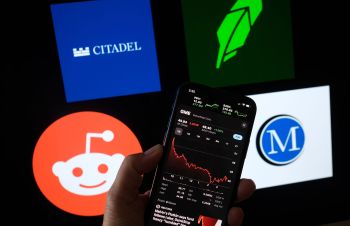From Wall Street to the Great Wall
TEXT OF INTERVIEW
Tess Vigeland: Think the housing situation is bad here? Be thankful you don’t live in China.
Home prices in that country’s 70 biggest cities were up more than 10 percent in December compared to a year earlier. Officials there worry that soaring prices could cause a debt crisis. Sound familiar?
But even with all of those problems, many investors still see China as a key to a profitable portfolio. Last month we aired an interview with economist Burton Malkiel about his new book “From Wall Street to the Great Wall.” We talked about why China’s investment climate and stock exchanges are different from ours.
Today we’ve asked him to talk about the “how.”
Vigeland: So professor, if you’re interested in investing in China, what’s the best way to do it?
Burton Malkiel: One of the main strategies that is recommended in the book is, first of all, that you don’t put all of your money in direct investments in Chinese stocks, but that one would use an indirect approach as well.
Vigeland: So that would be taking advantage of, for example, the run up in steel prices because of the building boom there or the run up in energy?
Malkiel: That would be exactly one example. This would be a lower risk, indirect way of accessing the Chinese market. In addition, there are many companies where the growth depends almost entirely on China. Let me give you a couple of examples. We have a company in the United States called Yum! Brands. Yum! Brands is the parent of Kentucky Fried Chicken, of Pizza Hut, of Taco Bell, and Yum! Brands is not doing terribly well in the United States, yet Yum! Brands is growing at 20 percent a year. Why? Because of China.
Vigeland: So we’ve exported our fast food obsession?
Malkiel: Yep. As a matter of fact, as you’re talking about exports, I’ll give you a factoid — which I didn’t even believe. Louis Vuitton sells more handbags in China than through all of Europe. You know, I would have believed that if they included the fake ones.
Vigeland: Exactly. I was going to say…
Malkiel: This is the real stuff! So this is another example of a company, basically the growth is coming very largely from China.
Vigeland: What if you’re willing to accept more risk? How can you really go for it?
Malkiel: Well, again, if you’re willing to accept more risk, there are some funds that enable you to buy Chinese companies.
Vigeland: Are these mutual funds?
Malkiel: Well, they’re not mutual funds because a mutual fund is open-ended. That is to say, you can put money in at the fund’s net asset value, you can take money out at the fund’s net asset value. These are closed-end funds; they raise some money, then they say they’re closed and if you want to sell, you have to sell to somebody else, somebody who’s willing to buy and the person who’s willing to buy might not be willing to pay the full net asset value. One of the funds that I think is a really good one is something called the Templeton Dragon Fund. It would be another sensible way to do direct investments, though again, I would emphasize that in order to keep risk down, the combination of some direct and some indirect is in my judgement, the most sensible way to go.
Vigeland: For the average investor here in the U.S., how much of a portfolio would you recommend be dedicated to China-related investments? Is it possible to make a generalization.
Malkiel: I don’t think you can make a generalization because it depends on one’s age, one’s income needs and it depends on one’s tolerance for risk. I know people who literally get sick if something they’ve bought in their portfolio fluctuates too much. You know, there’s the old story of J.P. Morgan was approached by a friend and he said “Mr. Morgan, what should I do? My stocks are jumping around so much I can’t sleep at night” and Mr. Morgan said “Well, I would sell down to the sleeping point.” So, let me try to answer your question then: a young individual who’s got a tolerance for risk and it isn’t going to bother them, I think you could put 15 percent or even 20 percent of your portfolio into China. For those who don’t have the capacity to take risk, for that kind of person 5 percent might even be too much
Vigeland: Burton Malkiel is the author, along with Patricia Taylor, of “From Wall Street to the Great Wall.” Sir, thank you so much for coming in. It’s been a pleasure talking to you.
Malkiel: It has been a pleasure talking to you Tess.
There’s a lot happening in the world. Through it all, Marketplace is here for you.
You rely on Marketplace to break down the world’s events and tell you how it affects you in a fact-based, approachable way. We rely on your financial support to keep making that possible.
Your donation today powers the independent journalism that you rely on. For just $5/month, you can help sustain Marketplace so we can keep reporting on the things that matter to you.


















